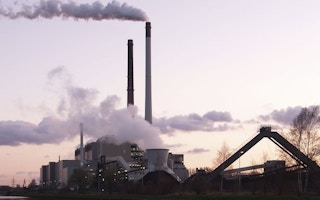China is the largest consumer of coal in the world. It is also the world’s biggest emitter of carbon dioxide.
But China’s coal use may have reached its peak in 2014, a new study published in Nature Geoscience suggests. In 2014, China’s coal use declined by 2.9 per cent, and dropped further by 3.6 per cent in 2015. The country’s gross domestic product (GDP), however, continued to grow in these years by around seven per cent, researchers said.
“We argue that China’s coal consumption has indeed reached an inflection point much sooner than expected, and will decline henceforth — even though coal will remain the primary source of energy for the coming decades,” the authors wrote in the paper. “We suggest that China has entered the era of post-coal growth.”
China’s rapid economic growth has been fueled by coal. According to the study, coal has remained China’s predominant source of energy over the past 35 years, constituting three-fourths of the overall energy mix. But coal’s share has been falling. In 2015, coal contributed less than 65 per cent of the country’s total energy mix, the authors reported.
The study attributed this shift to a number of factors including the ongoing economic slow-down in China, particularly in the construction and manufacturing industries. Between 2011 and 2015, growth in these sectors fell by eight per cent, the study said, despite these industries accounting for around 80 per cent of coal combustion over the five-year period.
“
We argue that China’s coal consumption has indeed reached an inflection point much sooner than expected, and will decline henceforth.
Tony Wu and fellow researchers, Tsinghua University
Strengthened policies regarding air pollution and clean energy are also contributing to China’s reduced coal use, the authors write. In fact, increased use of low-carbon sources such as solar, hydropower and wind, has resulted in a decline in China’s emissions by 1.5 per cent, according to the latest data by International Energy Agency (IEA). Over the past two years, China’s carbon emissions have remained nearly flat.
This dip in China’s declining coal use may be permanent, the authors argued. This is mainly because the country is seeing a number of long-term transformations that point towards a permanent reduction in coal use.
The country’s economic slow-down and drop in construction and manufacturing industries, for example, are long-term trends. Increased dependency on clean energy, policies reducing air pollution, and technological innovations for energy efficiency are also parts of the country’s long-term strategy.
“For the government, curbing air pollution is an important aspect of maintaining political legitimacy,” the authors wrote. “And the government’s recent Energy Development Strategic Action Plan explicitly outlines the progressive substitution of coal with clean energy: by 2020 coal’s share of the energy mix will decrease from 66 per cent to less than 62 per cent, and non-fossil fuels will rise from 11 per cent to a minimum of 15 per cent”.
The authors argued that a peak in China’s coal consumption may be an important milestone in the Anthropocene, and a “turning point in international efforts to mitigate the emissions of climate-altering greenhouse gases.”
“This assessment of the possible peaking of China’s coal use is a very positive development in international efforts to address climate change,” Patricia Espinosa, the incoming executive secretary of the UN Framework Convention on Climate Change, told the Guardian. “It underlines how ambitious and deliberate policies to shift away from highly polluting fuels to cleaner energy sources can deliver global climate benefits and national improvements in health and indeed in people’s lives.”
This story was published with permission from Mongabay.com

















